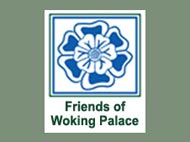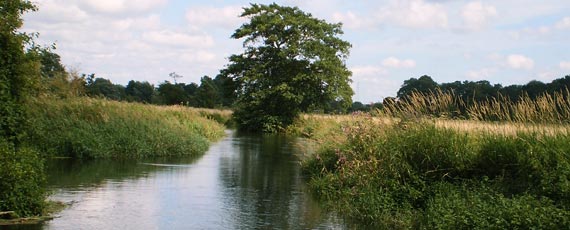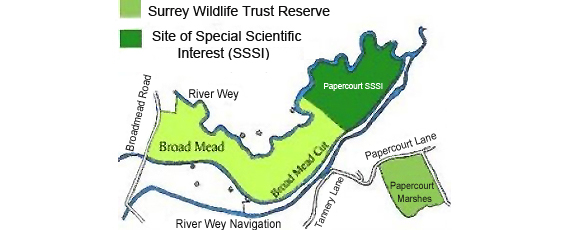The River Wey
The River Wey in Surrey, Hampshire and West Sussex is a major tributary of the River Thames with two separate branches which join at Tilford.
The river was made navigable to Guildford during the seventeenth century, and it was then extended to Godalming in the eighteenth century. The Basingstoke Canal and Wey and Arun Junction Canal were later connected to the river. The navigable sections are owned by the National Trust.
The river has been used as a source of power for mills over a long period, and many are recorded in the Domesday Book. 22 mills were recorded at one point and there were also more on its tributaries. At various times they have been used for grinding grain, fulling wool, rolling oats, crushing cattle cake, leather dressing, paper production and gunpowder manufacture.
The upper parts of the river are within the Surrey Hills Area of Outstanding Natural Beauty. The river passes through heathland, woodland and watermeadow, and this has resulted in a broad diversity of wildlife. In the summer, dragonflies, damsel flies and butterflies are attracted to the river. There are numerous Sites of Special Scientific Interest (SSSI), such as Broadmead opposite the Palace. Angling clubs use the river, and catch chub, barbel, roach, pike, bream, carp, perch and eel.
It is unlikely that the river was used as a mode of transport for people during medieval times, but supplies may have been brought in from local villages and farms to provision the Palace.
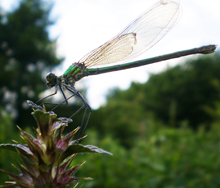
Dragonfly basking by the river |
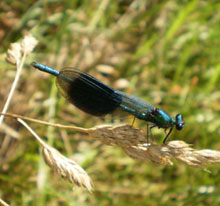
Damsel flies mate by the reeds |
